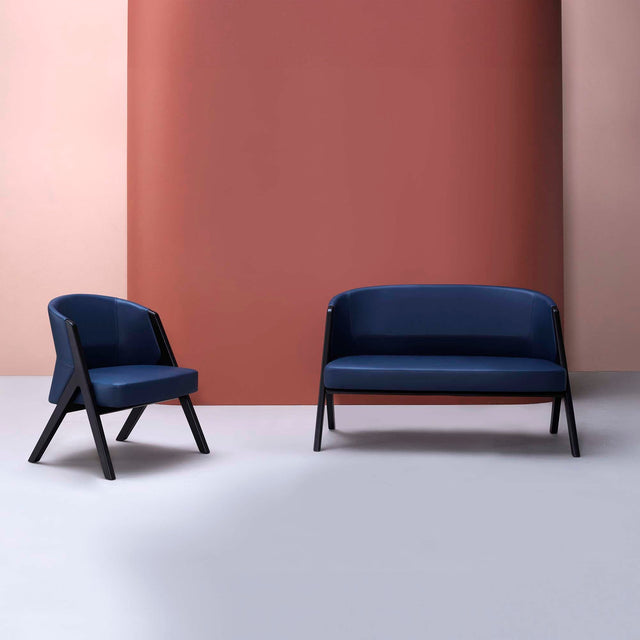Choosing the Right Furniture for Healthcare Waiting Areas
Healthcare waiting rooms are not just “holding areas” - they are the gateway to patient care, the first impression of your facility, and a major contributor to the patient experience. The right furniture can make the difference between a welcoming environment and a stressful, cramped, or even unsafe space. With rising patient expectations, infection control standards, and accessibility requirements, choosing the right waiting area furniture for your healthcare facility is more important than ever.
Why Waiting Room Furniture Matters in Healthcare
Well-chosen furniture can dramatically improve the atmosphere and perception of your healthcare facility. Here’s why it matters:
-
First Impressions: A patient’s comfort and trust begin in the waiting area, long before they meet a clinician.
-
Patient Well-being: The right furniture eases stress, offers physical support, and promotes a sense of safety.
-
Efficiency: Efficient layouts and modular options help with traffic flow and adjust to different patient volumes or distancing needs.
-
Hygiene and Safety: Healthcare-specific furniture reduces the spread of germs and is built to handle frequent, intense cleaning.
Key Factors in Selecting Healthcare Waiting Room Furniture
1. Durability and Longevity
Healthcare settings are tough on furniture. People of all shapes, sizes, and ages will use it all day, every day. Look for:
-
Commercial-grade construction: Residential options wear out quickly, so opt for healthcare-rated frames, joints, and finishes.
-
Warranty coverage: This signals a manufacturer’s trust in their own durability.
-
Weight ratings: Especially for bariatric and general use chairs - aim for at least 250 lbs for standard, 400+ for bariatric seating.
A waiting room chair with wobbly legs or moth-eaten fabric won’t last a year before it undermines your image.
2. Cleanability and Infection Control
In a space where germs linger and spills happen, your furniture must stand up to aggressive cleaning. Think:
-
Non-porous upholstery: Healthcare vinyl and advanced fabrics like Crypton resist fluids and can be wiped down many times per day.
-
Seamless or heat-sealed designs: Fewer seams mean fewer places for bacteria to lurk.
-
Metal or hard plastic frames: Unlike unfinished wood, these won’t soak up liquids or harbor germs.
A cleanable waiting room is a safer waiting room - for patients and providers alike.
3. Comfort and Accessibility
Furniture should blend comfort with universal design. Important details include:
-
Supportive yet firm cushions: Overly soft seats are hard for the elderly to rise from.
-
Chairs with arms: Help visitors stand up with ease.
-
Variety of sizes: Standard, bariatric (wider seat, higher weight capacity), child-sized seating.
-
Armless options: Essential for those transferring from a wheelchair.
A seamless blend of accessibility ensures that no one feels out of place - or physically uncomfortable - while they wait.
4. Flexibility and Layout Adaptability
In recent years, many facilities realized the benefit of a flexible waiting room. Why? The ability to:
-
Accommodate distancing requirements.
-
Rearrange for large families or solo visitors.
-
Easily add or remove seats if traffic patterns change.
Consider modular seating - groupings of chairs and benches that can be moved or reconfigured for privacy, family groups, or busy times.
Types of Healthcare Waiting Room Furniture
Healthcare facilities must offer a variety of furniture solutions tailored to different patients and visitors while considering flexibility, longevity, and user-friendliness.
Seating Options
-
Tandem seating: Great for space efficiency in high-traffic areas.
-
Lounge chairs: Offer comfort and privacy in specialty clinics.
-
Modular seating: Adaptable to changing layouts and needs.
-
Specialty seating: Includes bariatric, pediatric, and accessible chairs.
Tables
-
Side tables for bags, drinks, and reading materials.
-
Coffee tables in family waiting areas for shared use.
-
Laptop-friendly worktables with outlets for productivity.
Accessories
-
Charging stations: Built-in USB and power ports.
-
Magazine racks: Organized and easy to sanitize.
-
Planters and dividers: Add privacy and aesthetic appeal.
Designing an Effective Layout
The layout of your waiting area furniture can significantly affect how patients feel, how safely they move, and how efficiently your staff operates.
Creating a functional and inviting layout is as important as selecting the furniture itself.
Smart Zoning
-
Separate areas for families, individuals, and special needs.
-
Use furniture to create semi-private zones.
Safety and Circulation
-
Maintain clear walkways to exits and restrooms.
-
Avoid obstructing views - staff should easily monitor the space.
Flexibility
-
Use lightweight, modular pieces that can be rearranged.
-
Plan for seasonal spikes or events with adaptable layouts.
Creating a Positive Atmosphere and Calming Stress
A healthcare waiting room does not have to look cold or clinical. With a few design choices, you can promote patient comfort and reduce anxiety:
-
Warm, natural color palettes (greens, blues, wood tones) are shown to reduce stress.
-
Window views and indoor plants (real or faux) bring in the calming effects of nature.
-
Soft, adjustable lighting is less harsh than overhead fluorescents.
-
Use wall art, soft music, or aquariums to provide distraction and serenity.
-
Install acoustic panels or carpets to reduce harsh sounds and echo.
Never underestimate the emotional lift of a beautiful, tranquil space.
Keeping It Clean: Infection Control and Easy Maintenance
Even the best-designed space must be easy for staff to keep spotless. Choose furniture with:
-
Minimal seams or buttons, which can harbor bacteria.
-
Open bases for easy floor cleaning (no “skirts” or hidden areas).
-
Spare parts availability: Modular cushions or panels that can be swapped out extend the life of your furniture.
-
Compatibility with aggressive disinfectants.
Consider posting a discreet cleaning checklist near the waiting room or incorporate hand sanitizer stations that double as design elements.
What’s New in 2025: Trends Shaping Healthcare Waiting Areas
The latest wave of healthcare design reflects changing needs:
-
Many facilities are using more modular seating - easily rearranged for infection control surges or family clusters.
-
Integrated tech is expanding (think: power outlets built right into side tables, digital check-in stations, and interactive art).
-
Eco-friendly materials are on the rise, from recycled fabrics to FSC-certified woods.
-
Biophilic design - the infusion of nature into interiors - improves patient mood and perceived wait time.
Trends consistently show that patient comfort, flexibility, and infection control drive the direction of waiting room design.

